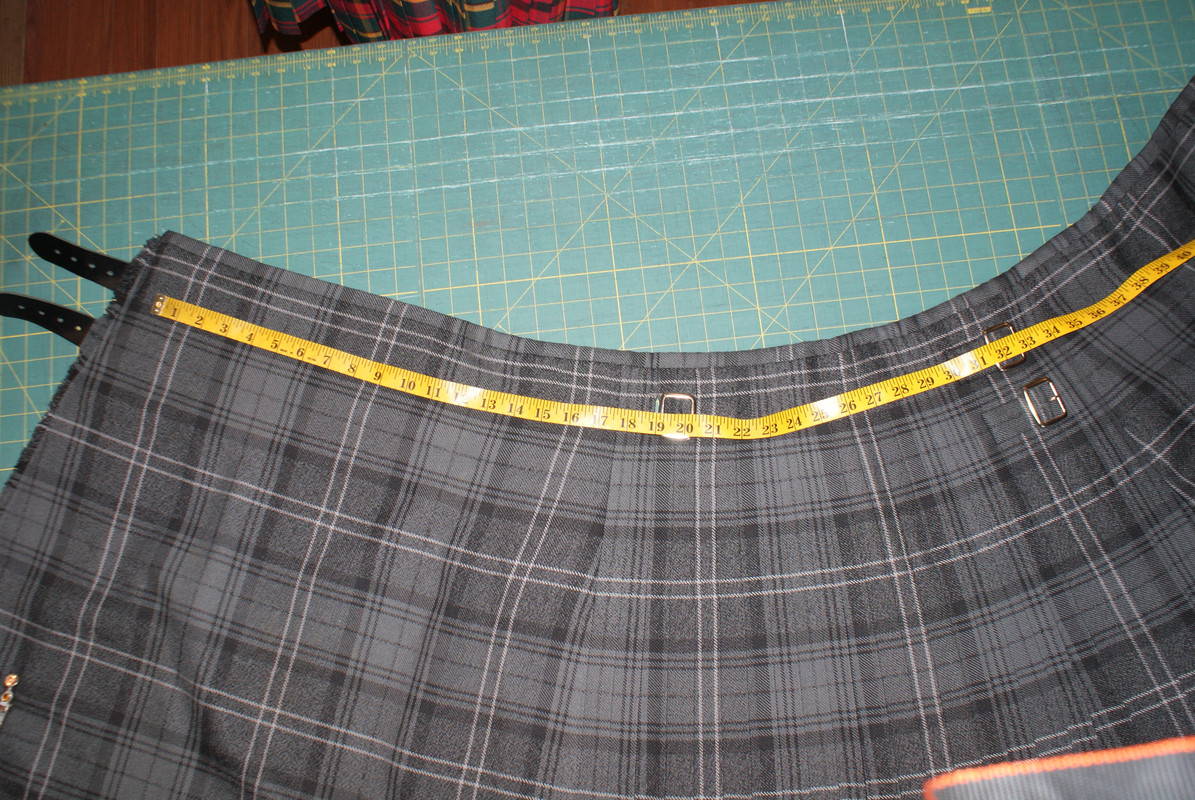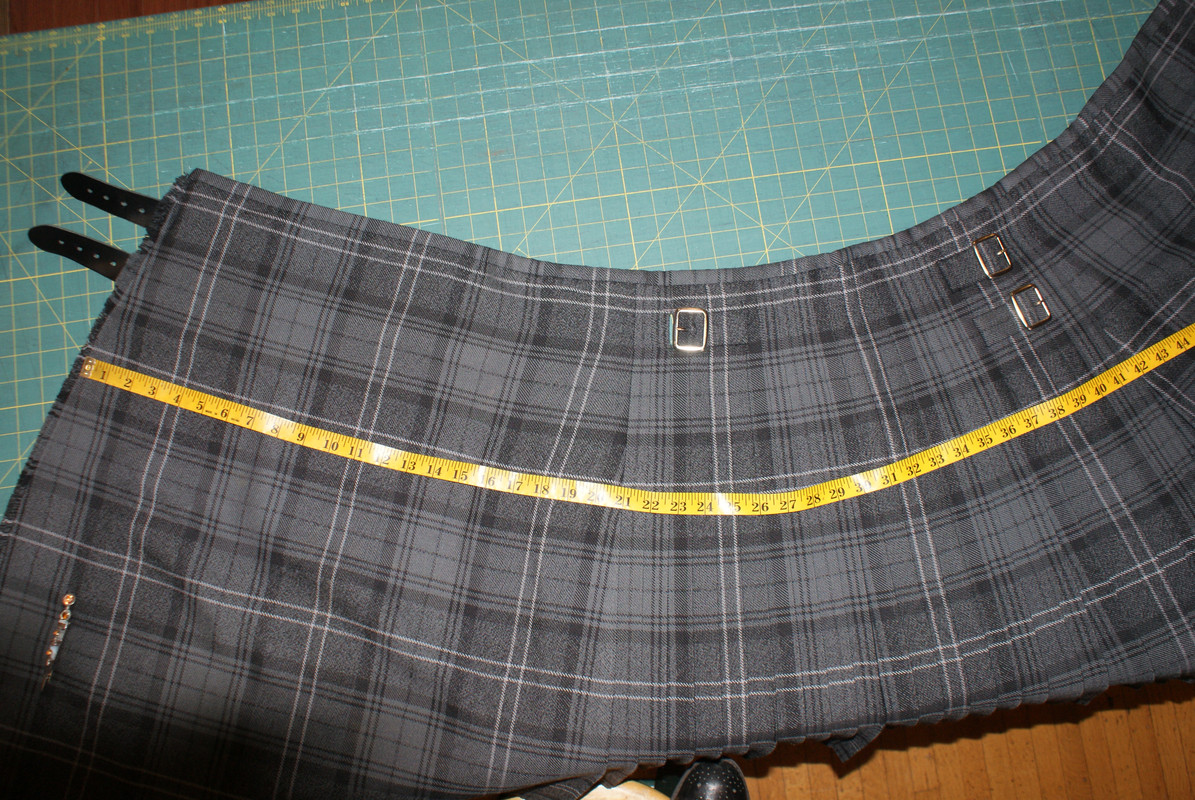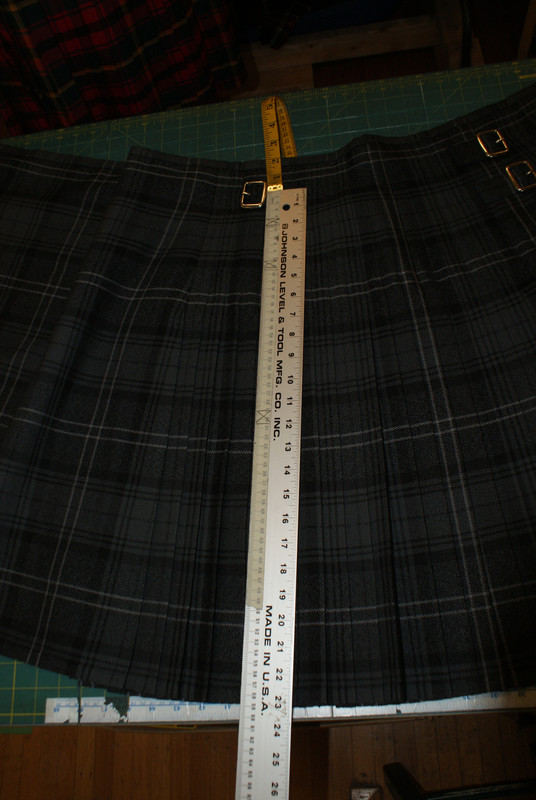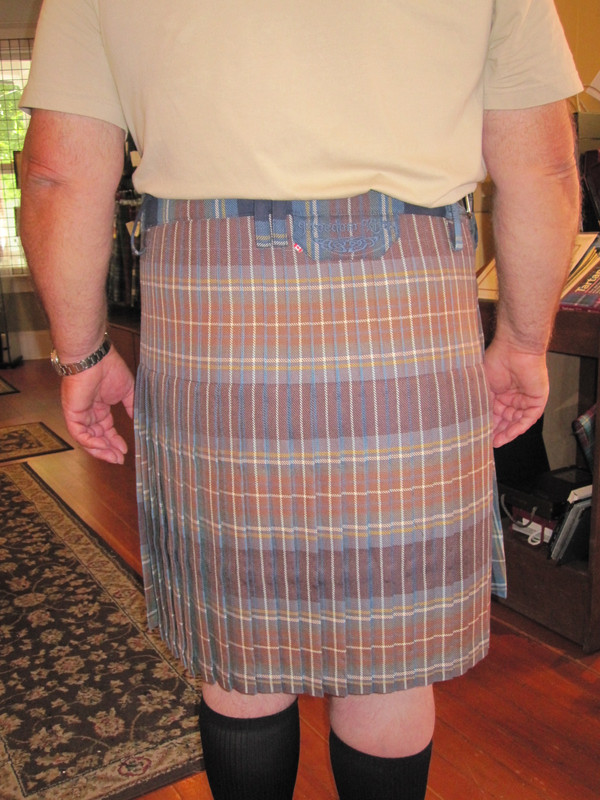|
-
26th April 21, 10:27 AM
#1
Only Three Measurements Needed to Buy a Kilt?
The majority of online volume kiltmakers in North America it seems require only three measurements to be taken: waist at belly button, hips, and length. That’s it. Given only these three measurements, do they take a guess at the waist measurement at the straps? (One would think that's really critical.) How far down are the straps (are they assuming a 2” rise)? How about the length of the fell? What if I have a high butt/bum? For an in-person kilt measuring (not really practical for most), what extra dimensions (if any) do kiltmakers take?
-
-
27th April 21, 08:04 AM
#2
Triathan
Go to YouTube you can watch Robert MacDonald a professional kiltmaker as he goes through various stages of making and repairing kilts. He'll explain how the formula kiltmakers use to figure out where and how to install belts and buckles. Watch him here: https://www.bing.com/videos/search?q...kilt&FORM=VDRE
-
The Following User Says 'Aye' to kilted redleg For This Useful Post:
-
27th April 21, 09:49 AM
#3
Each kiltmaker uses the set of measurements which work best for them based on the way they construct their products. Always wise to use the measurements requested by the kiltmaker you're using, and not somebody else.
Rev'd Father Bill White: Mostly retired Parish Priest & former Elementary Headmaster. Lover of God, dogs, most people, joy, tradition, humour & clarity. Legion Padre, theologian, teacher, philosopher, linguist, encourager of hearts & souls & a firm believer in dignity, decency, & duty. A proud Canadian Sinclair.
-
The Following 2 Users say 'Aye' to Father Bill For This Useful Post:
-
27th April 21, 10:14 AM
#4
Robert MacDonald Videos - Rise / Fell
So I did watch a few of his videos. For an adult male, for the rise, he states that he almost always measures 2-1/2" down from the top band and then he centers the strap around that mark. Now in his measurement system video, he measures the anatomical waist (located just below the ribs) and does not use any other waist measurement. He then measures the hips. He does measure from the anatomical waist to the hip to get the length of the fell, which I don't see any of the made-to-measure online volume kiltmakers requesting. Lastly, he measures what I assume to be the full kilt length from anatomical waist to the knee. This suggests to me that the top band of his kilts are meant to be worn at the anatomical waist, with no further rise beyond that. If true, this is lower than the old traditional method of having the straps centered at the anatomical waist as some have suggested, with a further flared rise above that, covering some of the lower ribs. So knowing the length of the fell and difference between waist and hips, that pretty much defines some sort of basic "spread angle." Based on what I've observed, it seems that the wearer's actual waist measurement at the straps does not really matter--true? If one doesn't have a fell measurement, is there some sort of rule of thumb which is used?
-
-
27th April 21, 04:04 PM
#5
I will caution - Robert uses his own system that I have never heard of anyone else using.
It is not "the" right or wrong system. It is the system that works for him. He also uses a very thick yarn when sewing the Fell and his stitches are visible.
The three most common measurements used by most "Traditional" kiltmakers are -
The waist circumference taken at the anatomical waist.
The hip or breech circumference, taken at the widest part of the hips or buttocks.
And the Drop or length from the anatomical waist, down to the top of the kneecap or 2 inches up from the floor if kneeling.
Most of these kiltmakers have their own amount of Rise that they add above the Drop for the flare. (2 inches is the most common)
There is a myth that because a kilt can be measured wile kneeling, that when worn the kilt should just brush the floor. This is actually a kiltmakers trick. If you take the length from the anatomical waist all the way to the floor, then that becomes the total length of the kilt. The top buckle is installed below the top of the kilt by the distance of the Rise so this results in the bottom of the finished kilt, when worn, being 2 inches from the floor.
Here is the waist of a kilt being measured
Notice that it is at the level of the top strap.
Notice also that this measurement does not include the under apron and starts 1 inch shy of the right side of the outer apron.

Here is the hip or breech measurement.
This is at the bottom of the Fell Area.

And here is the Drop.
Notice that it is taken from the center of the top strap, down to the selvedge edge.

The total length of the kilt is Drop + Rise.
Last edited by Steve Ashton; 27th April 21 at 04:12 PM.
-
The Following User Says 'Aye' to Steve Ashton For This Useful Post:
-
27th April 21, 04:21 PM
#6
Because I make kilts with the waist to be worn at where ever the customer specifies, a Fell Length was vital for my style of kilt.
The distance from the hips down to the knee cannot change. There is a bone there. So what changes is the length, UP from the Breech, to where the customer wishes to wear his waist. (The customer can also specify the amount of Rise in his kilt.)
So my measuring system starts with the Breech. The Fell Length is measured UP from the breech. The Drop is from the center of the top strap DOWN to where the customer wants the bottom of his kilt to hit his knee. The Total Length is Drop + Rise.
And I also measured the amount of the slope, down in the front and up in the rear.
So 7 measurements in all.
-
The Following 2 Users say 'Aye' to Steve Ashton For This Useful Post:
-
27th April 21, 04:29 PM
#7
It is quite common for people to be confused by different measuring systems.
This is why we stress - Use the system specified by the person who will actually be pushing a needle through the fabric.
NEVER send measurements from one maker to a different maker.
And remember that three measurements are quick and easy to build into a website. They may not be bespoke but if you are ordering a kilt off the web you are not ordering a bespoke kilt.
Each maker may have their own "standard" amount of Rise and their own "standard" amount for the Fell Length.
-
The Following User Says 'Aye' to Steve Ashton For This Useful Post:
-
27th April 21, 04:48 PM
#8
This issue of the Fell Length is perhaps the most misunderstood or omitted part of a kilt ordered over the web.
And yet it is perhaps the most critical measurement to a well fitting kilt.
Most kilt makers use some "shop standard" for their Fell Length. 1/3 of the Drop appears to be the most common.
But - if the wearer wishes to wear the kilt lower than it was designed to be worn, the bottom of the Fell will end up lower that the line of the hips.
This will cause the back of the kilt to develop large "shower curtain" folds in the pleats.
And the person will end up sitting on the lower portion of the Fell which puts stress on the Fell stitching causing the stitching to fail.
That is why you so often see kilts being worn with the bottom below the knee -
And the back ending up looking like this.
Also notice please the distortion of the apron edges. The lower strap is not supposed to be worn tightened up. It's for show only on this type of kilt..

Conversely, if the wearer is wearing a kilt with the bottom of the Fell above the line of the hips, you see the pleats splayed out in a distinct "A line skirt" shape.

A well fitted and worn kilt should have the pleats laying flat and smooth. From a few feet away it should be hard to tell that there are pleats at all. At least until they move. Then the pleats should swish like water.

-
The Following 6 Users say 'Aye' to Steve Ashton For This Useful Post:
 Posting Permissions
Posting Permissions
- You may not post new threads
- You may not post replies
- You may not post attachments
- You may not edit your posts
-
Forum Rules
|
|
























Bookmarks